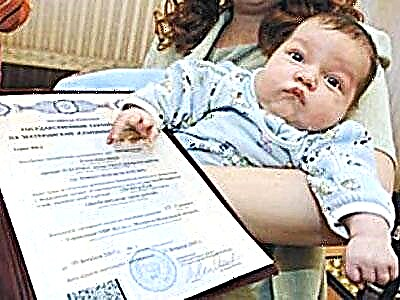
All parents take their children to the polyclinic to donate blood. Moms and dads know that laboratory assistants examine the composition of the blood for the amount of hemoglobin, to determine the number of other blood cells, the functions and purpose of which remain a big mystery to patients. Therefore, the diagnosis, which is sometimes made after examining the child's blood, - neutropenia - raises horror and a lot of questions. The well-known children's doctor Yevgeny Komarovsky tells about this.

Neutropenia in children is a decrease in the blood of a certain type of white blood cell (cells involved in immune processes). These white blood cells are the most numerous and are called neutrophils. They were created by nature to fight bacteria that cause a variety of diseases. These protective cells are produced by the bone marrow, after which they enter the bloodstream and begin to "patrol" the body, which lasts 6 hours. If during this time they find a bacterium with which to fight, the process of its destruction begins. If they are not found, they are replaced at the post by a new portion of neutrophils. When these cells are deficient, the child becomes most vulnerable to various diseases.

What it is?
Any disease, be it viral, bacterial or parasitic, can cause a decrease in the number of "efficient" neutrophils. Deficiency of vitamin B 12, malignant diseases of the bone marrow (leukemia, etc.) can lead to neutropenia, sometimes the number of neutrophils decreases in diseases of the spleen and pancreas. Thus, after identifying the causes, doctors are obliged to add one more word to the diagnosis of "neutropenia" - either it is benign or malignant.

In children under one year old, according to Komarovsky, a benign form of the disease is most often diagnosed, the so-called cyclic neutropenia, in which the number of such important leukocytes-neutrophils sometimes increases, sometimes decreases. This situation does not require special treatment and itself passes closer to the age of three.

The most severe type of the disease is autoimmune. With her, the child's immunity for some reason considers neutrophils to be foreign agents and actively destroys them. With this form, qualified medical care is required.

Treatment according to Komarovsky
Adequate treatment implies knowing the exact reason for the decrease in the number of neutrophils in the blood:
- The bone marrow is damaged by a severe viral infection. This is usually temporary and will require supportive care.
- Agranulocytosis. Congenital pathology, characterized by a particularly severe course. May require antibiotic therapy with an additional effect of medications on the growth of neutrophil colonies. Sometimes such a child needs a bone marrow transplant.
- Benign neutropenia. A mild form of a congenital or acquired character does not require treatment in an easy stage. In the middle, supportive therapy may be prescribed.
- Constantly recurrent form of the disease. If a cell deficiency is found every 3-4 weeks, the child often has stomatitis, then he may be prescribed antibiotics, as well as drugs that act on the growth of granulocyte colonies.
- Depletion neutropenia. If a child is exhausted, he has a deficiency of vitamin B 12, as well as folic acid, treatment will be aimed at eliminating such a deficiency by prescribing vitamin therapy and folic acid preparations, as well as nutritional correction.

- Medication form. If the pathology appears against the background of taking certain medications, they should be immediately canceled and, if necessary, supportive treatment should be provided.
- Autoimmune idiopathic form.With it, it is not possible to establish the exact cause. The child is prescribed corticosteroids and intravenous immunoglobulin.
- Neutropenia of newborns. The problem is congenital, associated with the inhibition of fetal neutrophils by the mother's antibodies. With her, the child is given supportive treatment, sometimes the condition itself normalizes within a few days.
How to prevent the effects of neutropenia, see the next video.



